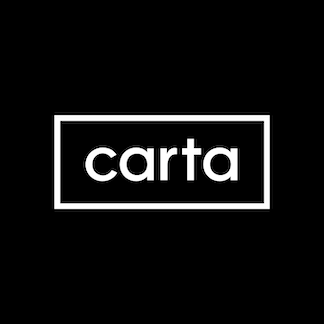How much is an employee worth to a company?
What is employee compensation?
Compensation is what you pay employees in exchange for their time, work, or services. While it sounds simple enough, compensation quickly becomes complicated. Getting compensation wrong or failing to properly invest in your employees can be the difference between a thriving company and a failed startup.
Knowing the different types of compensation, the various ways to structure it, and developing a strong plan isn’t limited to the human resources department. Figuring out compensation should be on the top of every founder’s to-do list. In this article, we’ll guide you through the basics of employee compensation.
Types of compensation & compensation examples
Compensation, also called “direct compensation,” is strictly salary, bonuses, and equity. “Total rewards” encompasses compensation plus benefits. (You may hear total rewards described as “total compensation,” but since benefits aren’t strictly compensation, that’s less accurate.)
|
Compensation |
Total rewards |
|
Salary |
Salary |
|
Bonus |
Bonus |
|
Equity |
Equity |
|
Benefits |
Direct compensation
Here are some considerations to keep in mind when determining direct compensation:
Base pay
Base pay or base salary is often the foundation of any company’s total rewards. Salaries can be standard regardless of location or can be based on an employee’s specific region. For example, to stay competitive in local markets you may choose to pay employees in San Francisco, California, more than employees in Raleigh, North Carolina, based on the cost of labor. That’s where competitor and market research comes in handy.
Overtime pay is additional pay that is part of an employee’s salary and is considered regular income. It’s typically reserved for non-exempt employees who earn an hourly wage and work more than 40 hours per week (or other hourly standards set by the company or by law).
Bonuses
Variable compensation is a payment that is typically performance-based and therefore is subject to change between payout periods. An annual company bonus or a sales commission are examples of variable compensation given to employees on top of a base salary. Bonuses may be part of an employee’s overall compensation and paid out routinely every year (or sometimes more frequently), and they usually depend on factors such as the company meeting its business goals.
Equity compensation
Many startups offer equity to employees as part of a compensation package. Stock options and restricted stock units (RSUs) are two types of equity compensation. By giving your employees a piece of the company, they share in the company’s success and are motivated to stay longer. Details of equity compensation—including the type of equity being granted and any applicable vesting schedules—should be provided to an employee as part of a job offer. Vesting is the timing of when an employee actually earns the equity granted to them.
Total rewards (Indirect compensation)
Employee retention generally comes down to more than just compensation. It often takes into account benefits, development opportunities, and company culture, all of which fit nicely into a holistic total rewards approach. Those benefits, also known as indirect compensation, can include a wide range of perks, depending on your company’s philosophy and overall mission.
Employee benefits packages
Employee benefits packages are flexible and dependent on a company’s overall philosophy. Examples of these benefits include:
-
Medical insurance (healthcare)
-
Dental and vision coverage
-
Retirement benefits
-
Wellness benefits (such as gym reimbursement)
-
Educational incentives or continuous-learning stipends
-
Well-being benefits (coaching, meditation, therapy)
-
Volunteer opportunities
-
Flexible spending accounts (FSA)
-
Flexible work opportunities (hybrid work)
-
Paid time off (PTO), sick leave, and paid holidays
-
Life insurance and disability insurance (DI)
-
Company equipment (such as a laptop)
-
Reimbursement for childcare expenses
-
Relocation stipends or housing options
-
Reimbursement for work-from-home costs
-
Commuter benefits
Each company is different and some leaders choose to prioritize direct compensation over benefits.
Developing a compensation plan
Also called your compensation strategy, a compensation plan is built on four pillars: compensation philosophy, job architecture, performance management, and incentives.
Compensation philosophy
Creating or updating any compensation program starts with a clear philosophy. A compensation philosophy is your company’s overall position on employee compensation—for example, prioritizing direct compensation over total rewards, adhering to strict compensation guidelines, or going the extra mile for the right employee. Aligning your compensation philosophy with your business strategy can help you hire, retain, and reward top talent.
Job leveling structure
Job leveling structure is how you define roles and leveling. Also called job architecture, leveling, or job structure, this refers to the hierarchy of roles and levels within your company. Having a clear map of job roles and responsibilities is important for setting accurate compensation levels.
Employee performance management
The guidelines your company uses for performance evaluations are known as performance management. This helps managers track employees’ work so they can receive ongoing feedback and advance their careers. For employers, performance management provides a framework for determining whether an employee merits an increase in compensation.
Incentive compensation
Incentives like bonuses and equity compensation encourage employee performance and stimulate productivity. Some companies make this a key part of their compensation philosophy, seeing it as a way to attract and retain talent and incentivize employees.
Regularly review
Regularly reviewing your comp plan based on factors like the market value of specific roles and inflation will help you to stick to your compensation philosophy, hire quickly and successfully, reduce employee attrition, and address issues of employee equity.
Compensation packages: Terms to know
A compensation package is what you offer or present to employees and candidates, typically in the form of a total compensation or a total rewards statement.
Total compensation statement
A total compensation statement shows employees the full current and future value of their compensation packages. At Carta, we generate Total Rewards Statements for companies on our platform so they can show their employees the value of an entire total rewards package—not just direct compensation. The overall value of working at a company becomes more tangible when you can demonstrate when and how bonuses, pay raises, or vesting occurs. The increased transparency can allow the company to stay competitive in local markets and reduce attrition.
Compensation bands
A compensation band, or salary range, is an upper and lower range of compensation that you would be willing to pay someone in a specific role. Comp bands can be structured in two ways: traditional and broadband.
A traditional salary range is common at larger companies. This structure has smaller differences between the minimum and maximum comp bands, placing more emphasis on promotions. A broadband salary range is much wider and is more common at smaller companies with fewer employees because it allows for more flexibility.
Salary benchmarks
Salary benchmarks are a standard way to measure market rates for given roles. They can be useful in determining whether your employees are being paid competitively for their roles. The type of benchmarks that a company uses should reflect their overall compensation philosophy.
Pay transparency
Setting comp expectations avoids wasting employers’ and candidates’ time during interviews and negotiations. Over the long term, pay transparency can protect against low morale and attrition by showing that employees are paid similarly to their peers. Limiting negotiations to a published range reduces the opportunity for unequal outcomes that may arise unintentionally during hiring, which can guard your company against certain claims of pay discrimination.
Offer letter
An offer letter is a document sent to a prospective employee that officially offers them a role. Offer letters typically include a job description, conditions of employment, and, of course, total rewards details.
Demonstrating the value of equity
Creating more owners is what we do at Carta. Offering equity compensation to your employees gives them the opportunity to grow wealth. Traditional job offer letters focus a lot on base salary and benefits, but not enough on equity compensation. Future employees may not be able to visualize their complete compensation package. That’s why we created the Carta Offer Letter, complete with easy-to-read illustrations, education about equity, and other important contextual information to help you land top talent.
→ Download: The Carta Offer Letter template
Total Rewards
At Carta, we’re changing the way companies think about compensation. Carta Total Comp is a tool private companies can use to attract and retain employees by leveraging the value of total rewards.
-
Carta Offer Letters show your potential hires their entire rewards package.
-
Total Rewards Statements show your employees the full value of their compensation and benefits packages.
Carta Total Comp uses the most recent, relevant, and reliable salary and equity data so you can make responsible compensation decisions, stay on budget, and communicate the true value of your compensation packages.




